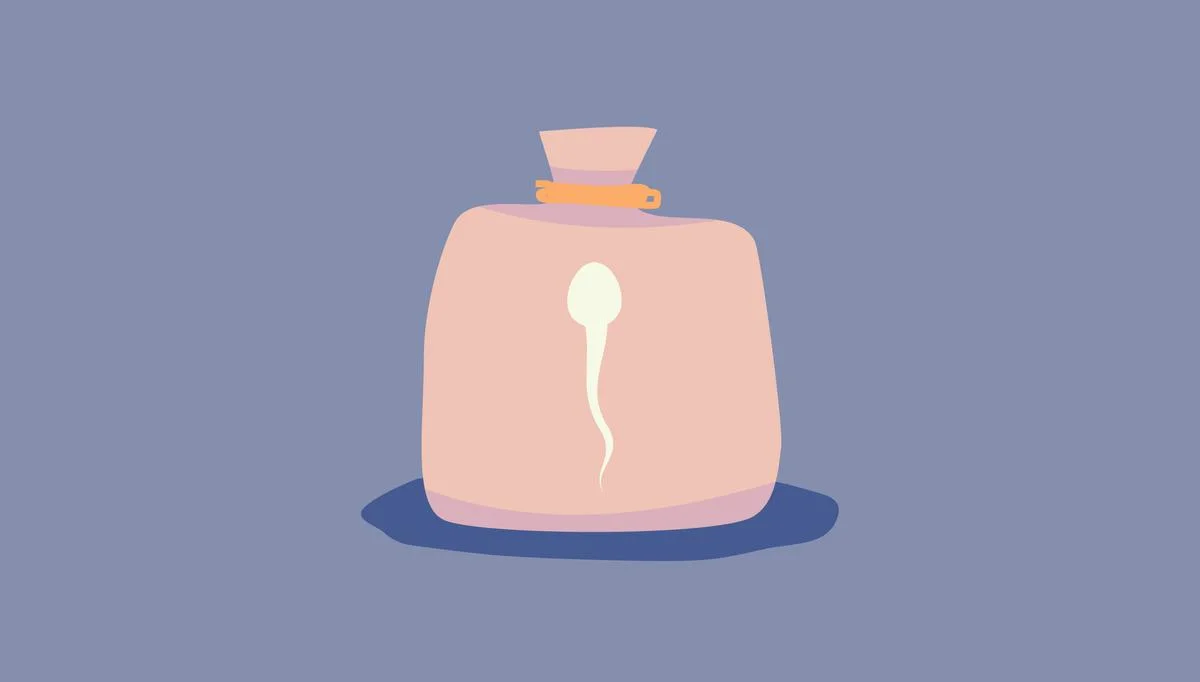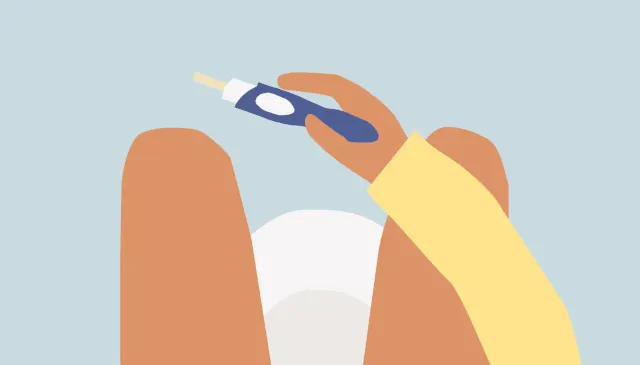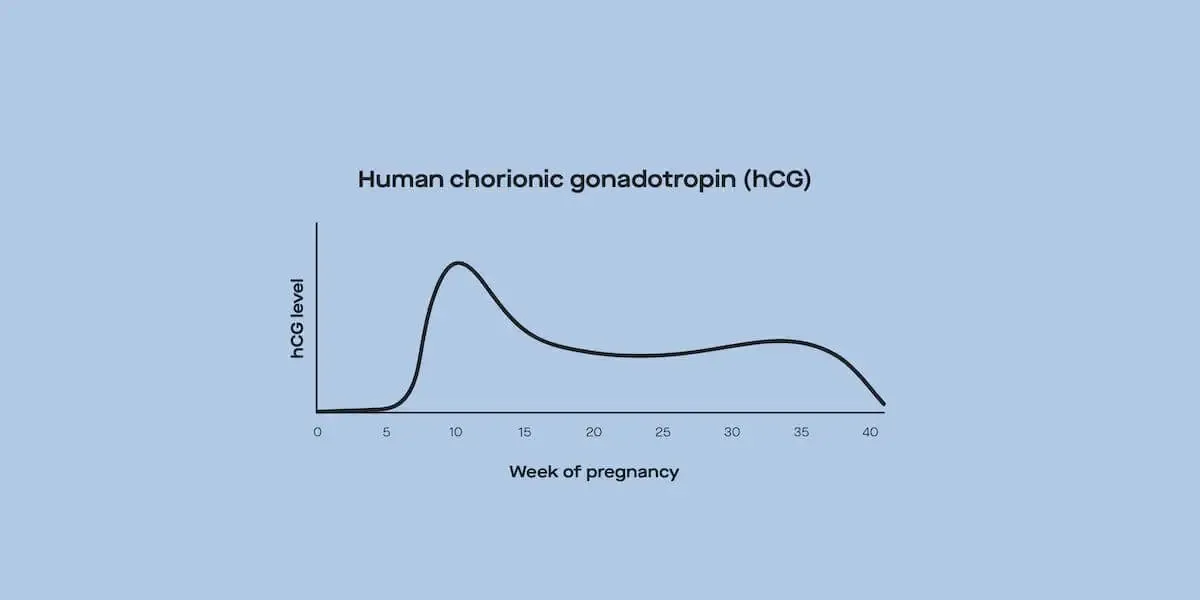Here's what we'll cover
Here's what we'll cover
One of the greatest advances in reproductive medicine has been the introduction of assisted reproductive technology or ART. With treatments like intrauterine insemination (IUI) and in vitro fertilization (IVF), you have a better chance of clearing hurdles along the path to pregnancy.
If you’re using the modern marvels of medicine to conceive at a fertility clinic, you might already know that your specific plan informs the type of sperm you use. But is there a significant difference between different types? Does the type you use impact treatment outcomes? Read on to learn more about sperm and fertility treatment.
What are the different types of sperm used in fertility treatment?
The type of sperm you use isn’t exactly up to a personal choice, other than choosing between a non-identified (“anonymous”) or directed (“known”) donor—the decision boils down to who’s providing the sample and what you’re doing with it.
“The main reasons someone will use frozen sperm is when the partner is not available the day of the egg retrieval, has severe male factor infertility, and we are needing to retrieve sperm from the testicles or they are using donor sperm,” explains reproductive endocrinologist and Modern Fertility medical advisor Dr. Temeka Zore, MD, FACOG. “Otherwise, we typically use fresh sperm.”
Here’s what to know about “fresh” versus frozen sperm.
“Fresh” washed/processed sperm
This is the type of sperm you’d be working with if you undergo IVF or IUI with a partner who produces sperm.Any sperm sample that’s used at a fertility clinic will be washed and processed to remove debris, as well as check movement (motility) and concentration (the number of sperm per unit volume of semen). The process involves separating the sperm from the seminal fluid (aka the ejaculate) so you get a concentrated amount of healthy sperm, and that washed sperm is placed in a protective liquid.
Frozen and thawed sperm
This sperm has gone through cryopreservation to store and preserve the sperm for later use. For example, a person might opt to freeze their sperm before beginning cancer treatment to preserve post-treatment fertility.
Frozen sperm will have been washed and processed before being frozen and stored in a freezer where it can be kept indefinitely. When the frozen sperm is ready to be used, the sample will be thawed until it reaches room temperature, and then analyzed again after thawing to make sure the sperm are still viable and healthy.
If you’re undergoing ART at a clinic, insemination will be timed as closely to ovulation as possible regardless of what sperm type you’re using for better odds of sperm meeting up with an egg. (Doctors recommend trying to conceive through sex every 1-2 days during the fertile window, or the five days leading up to and the day of ovulation, because sperm can live in the reproductive tract for up to five days.)
Does the type of sperm you use impact treatment outcomes?
According to Dr. Zore, there just aren’t many quality comparative studies looking into fresh versus frozen sperm in fertility treatment. Why? Because, as she explained earlier in this article, people typically opt for fresh sperm when they can. Below, we’re sharing what research we do have — and the factors that matter a lot more for treatment outcomes.
Fresh vs. frozen sperm and IUI success rates
IUI is a process that places the sperm directly into the uterus, so it has a shorter distance to go, bypassing the cervix and making it more likely that the sperm will encounter the egg.
In one 2018 study that reviewed 566 IUI cycles for women who were diagnosed with unexplained infertility, researchers found that fresh sperm led to significantly higher live birth and pregnancy rates when compared to frozen sperm for IUI using ovulation-inducing medications. That said, this study didn’t control for age (or individual drug protocols) — which is a major factor in IUI success.
Research aside, either fresh or frozen sperm is fine to use in IUI as both can lead to a successful pregnancy. Rather than the type of sperm used, factors that affect the success of IUI more often include:
Age: some data suggests that IUI per-cycle success rates are below 1% for people over the age of 43
Male infertility: including low sperm counts, decreased sperm motility, a high percent of sperm with abnormal morphology, and a high percentage of sperm with DNA damage
Fallopian tube anatomy: a blockage can prevent conception
Uterine conditions: endometriosis, uterine septums, fibroids, etc.
Fresh vs. frozen sperm and IVF success rates
In an IVF cycle, the ovaries are stimulated with fertility medications to grow multiple follicles and mature the egg inside each follicle, followed by egg retrieval (the same process that kicks off egg freezing). Then, sperm and eggs are combined in a lab followed by embryo transfer(s) into the uterus — where embryos ideally implant into the uterine lining and develop into a pregnancy.
Research around fresh versus frozen donor sperm in IVF is limited. However, the data suggests that you can use either fresh or frozen sperm. Other factors that may impact IVF outcomes more include:
Age of the egg and sperm providers
Genetics
Ovarian reserve (how many eggs are available for retrieval)
The bottom line
The sperm you use when trying to get pregnant through fertility treatment largely depends on your plan and whether you’re using sperm from a partner, a directed donor, or a non-identified donor. Most fertility specialists say that any sperm type is fine if the partner or donor has relatively “normal” sperm parameters. Other factors, like age, matter a lot more for your success rates than the sperm type you’re using.
DISCLAIMER
If you have any medical questions or concerns, please talk to your healthcare provider. The articles on Health Guide are underpinned by peer-reviewed research and information drawn from medical societies and governmental agencies. However, they are not a substitute for professional medical advice, diagnosis, or treatment.
Anger, J., Gilbert, B., & Goldstein, M. (2003). Cryopreservation of sperm: indications, methods, and results. The Journal of urology, 170 (4Pt1), 1079-84. doi:10.1097/01.ju.0000084820.98430.b8. Retrieved from https://www.auajournals.org/doi/full/10.1097/01.ju.0000084820.98430.b8
Boomsma, C. M., Cohlen, B. J., & Farquhar, C. (2019). Semen preparation techniques for intrauterine insemination. The Cochrane Database of Systematic Reviews, 10 (10), CD004507. doi:10.1002/14651858.CD004507.pub4. Retrieved from https://www.ncbi.nlm.nih.gov/pmc/articles/PMC6792139/
Dabbagh Rezaeiyeh, R., Mehrara, A., Mohammad Ali Pour, A., et al. (2022). Impact of various parameters as predictors of the success rate of in vitro fertilization. International Journal of Fertility & Sterility, 16 (2), 76–84. doi:10.22074/IJFS.2021.531672.1134. Retrieved from https://pubmed.ncbi.nlm.nih.gov/35639653/
Jain, M. & Singh, M. (2022). Assisted reproductive technology (ART) techniques. StatPearls. Retrieved on Feb. 27, 2023 from https://www.ncbi.nlm.nih.gov/books/NBK576409/
Muthigi, A., Jahandideh, S., Bishop, L. A., et al. (2021). Clarifying the relationship between total motile sperm counts and intrauterine insemination pregnancy rates. Fertility and Sterility, 115 (6), 1454-1460. doi:10.1016/j.fertnstert.2021.01.014. Retrieved from https://www.sciencedirect.com/science/article/pii/S0015028221000352
Sheena R., Randal R., Tommaso F., et al. (2018). Intrauterine insemination with fresh versus cryopreserved spermatazoa in unexplained infertility. Global Journal of Reproductive Medicine, 5 (3), 555662. doi:10.19080/GJORM.2018.05.555662. Retrieved from https://juniperpublishers.com/gjorm/pdf/GJORM.MS.ID.555662.pdf










